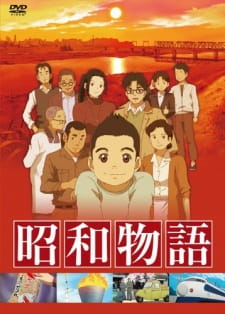Alternative Titles
Synonyms: Showa Monogatari TV, TV Manga Shouwa Monogatari
Japanese: 昭和物語 TV
Information
Type:
TV
Episodes:
13
Status:
Finished Airing
Aired:
Apr 4, 2011 to Jun 26, 2011
Premiered:
Spring 2011
Broadcast:
Unknown
Producers:
None found, add some
Licensors:
None found, add some
Studios:
WAO World
Source:
Original
Genre:
Drama
Theme:
Historical
Duration:
22 min. per ep.
Rating:
PG - Children
Statistics
Ranked:
#50392
2
based on the top anime page. Please note that 'Not yet aired' and 'R18+' titles are excluded.
Popularity:
#8302
Members:
5,881
Favorites:
7
Available AtResources | Recommendations
|







